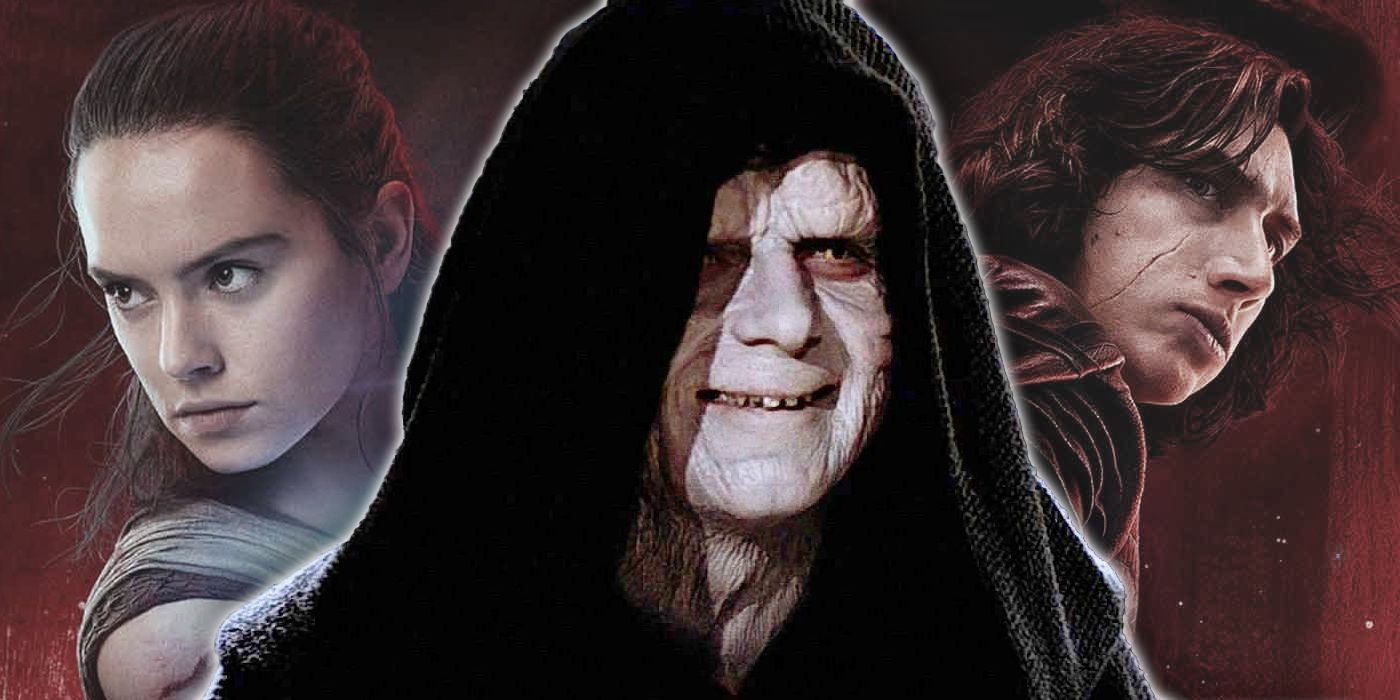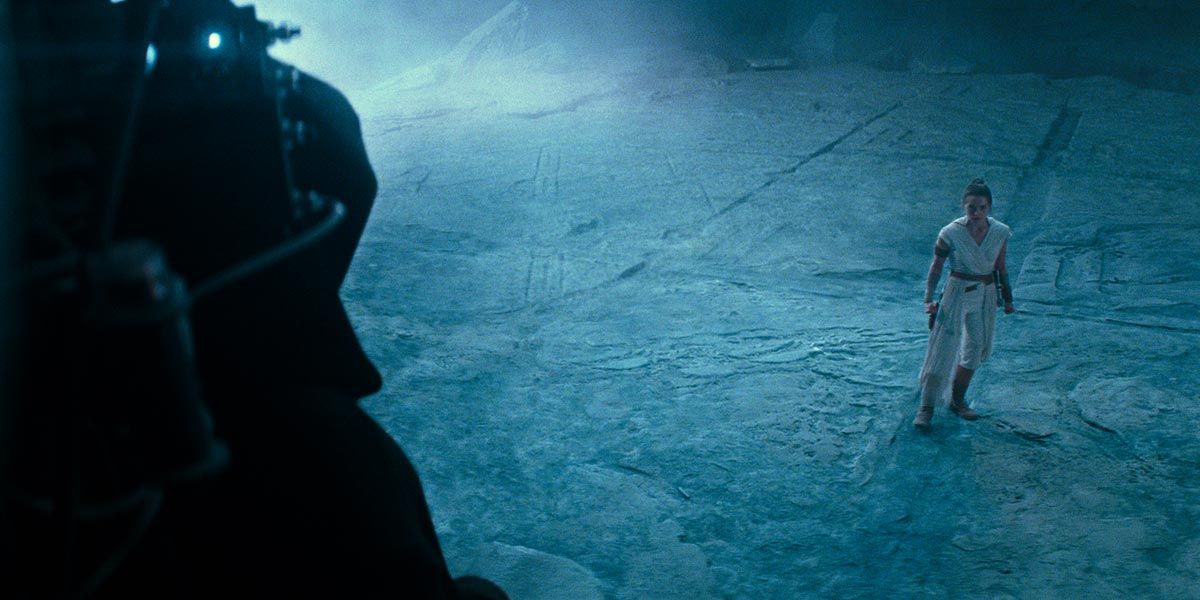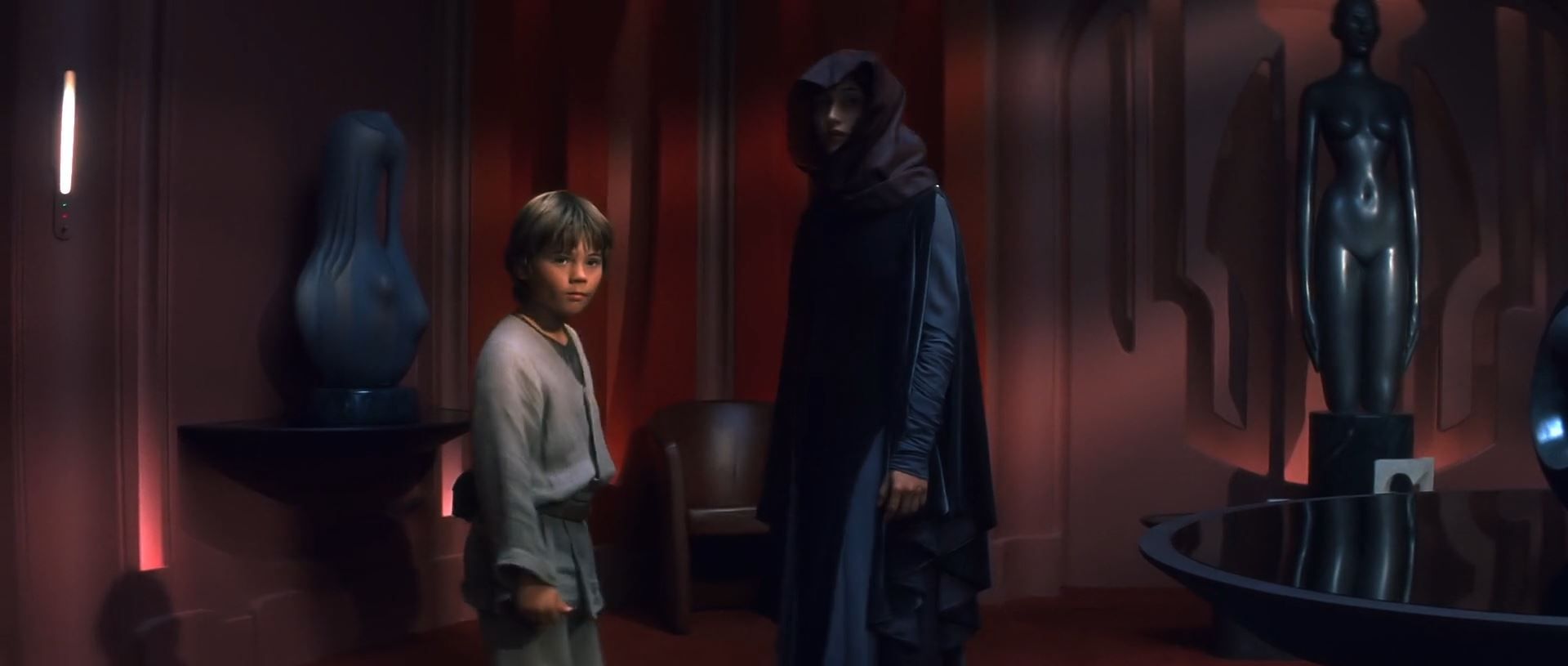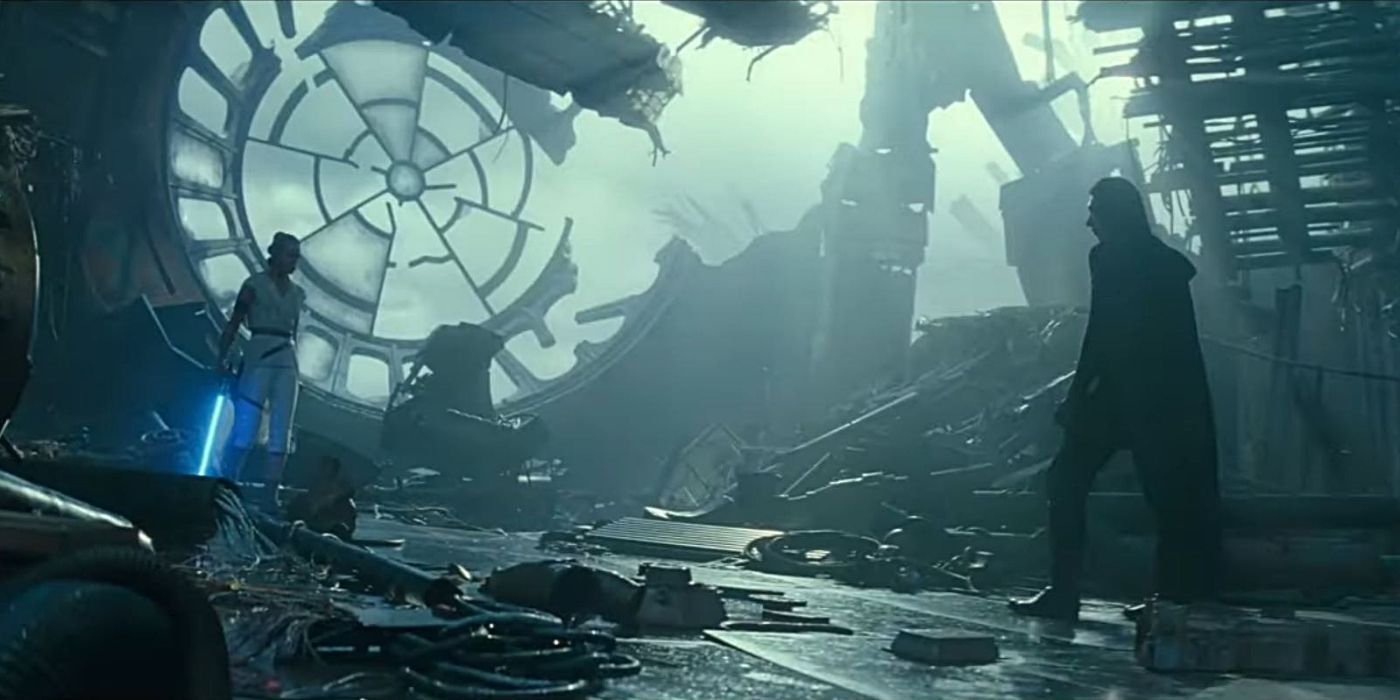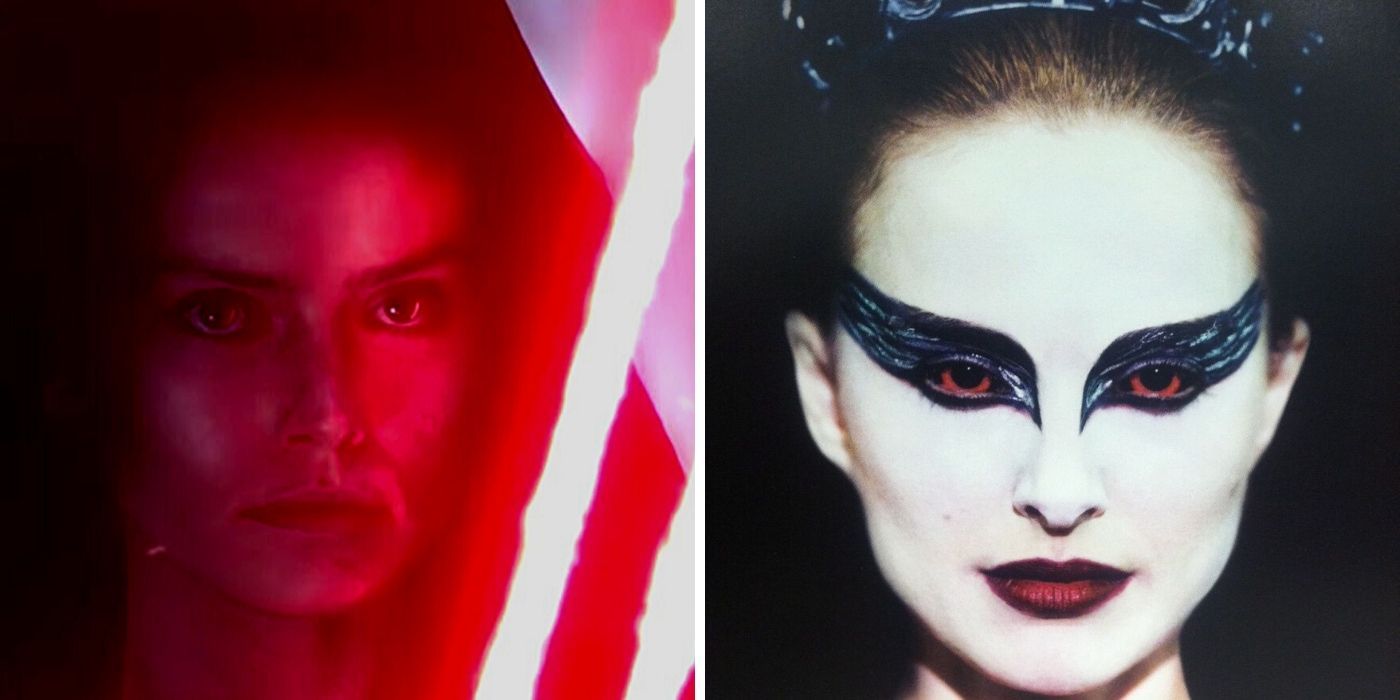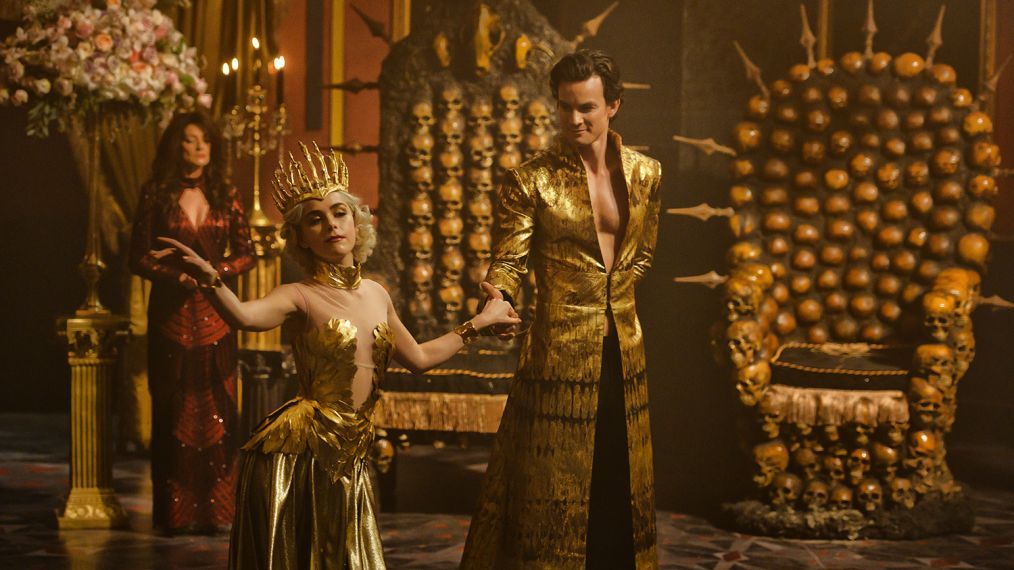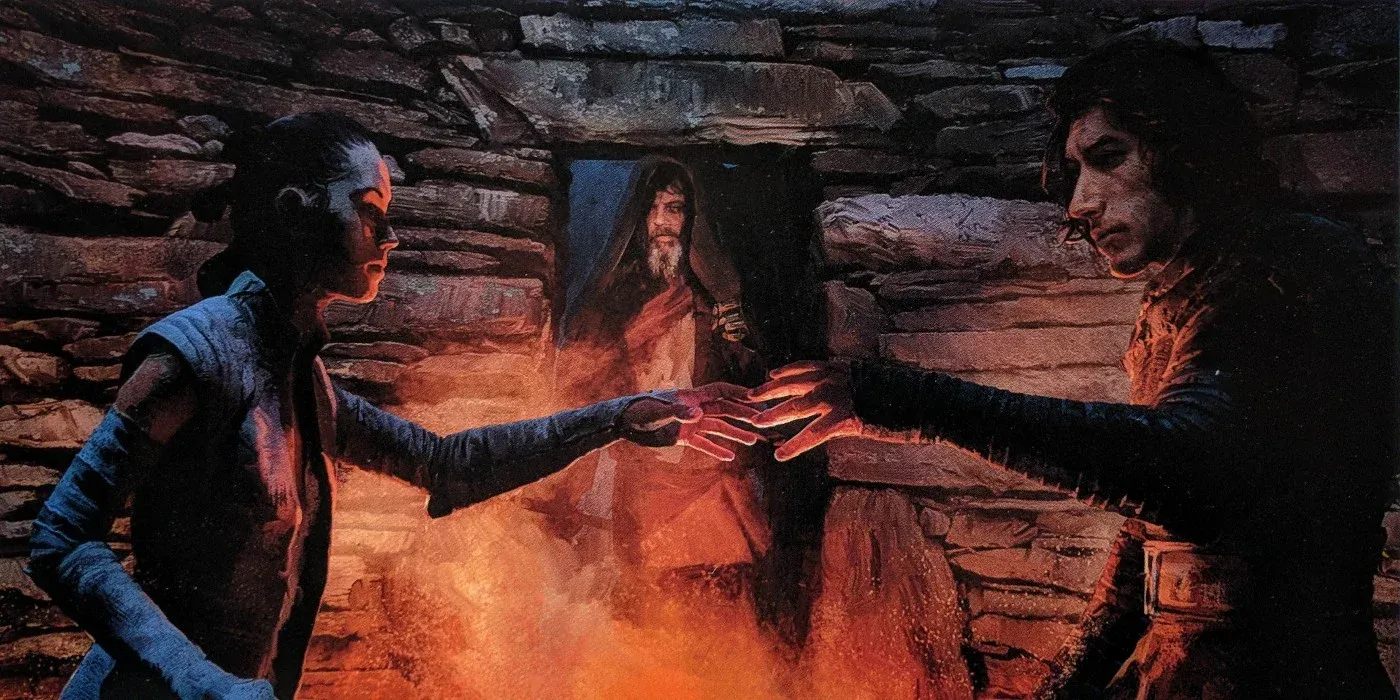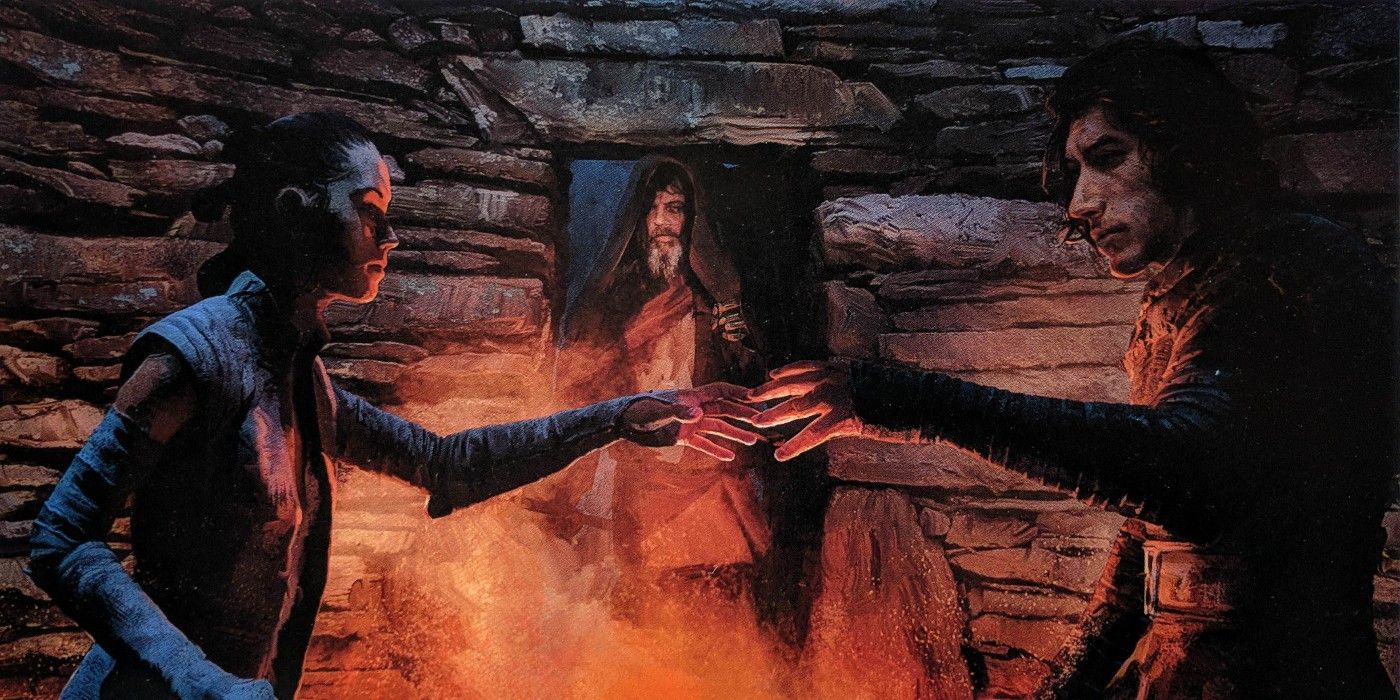Most of the promotional material that has been released for The Rise of Skywalker, as well as the ancillary stories, are pointing towards an endgame where Bendemption (the redemption of Kylo Ren as Ben Solo) and Reylo (the romantic union of Rey, the heroine of the sequel trilogy, and Kylo/Ben, who was initially presented as her enemy) will happen, and even Kylo Ren’s harshest detractors are grudgingly admitting that this is the love story at the heart of the sequel trilogy.
However, this begs the question if Star Wars is putting so much effort into preparing fans for this outcome -- queue the transparent Pride and Prejudice parallels in the final trailer -- and Rey’s temptation to join Kylo Ren in the dark side was already explored in The Last Jedi, what exactly is J.J. Abrams keeping up his sleeve? Could it be… the unholy union of Palpatine and Rey, that was explored in a recent What the Force podcast episode called Dark vs. Divine Union and that we shall call for the purpose of trending, clickbaity hashtags, #Palparey?
Before you close your browser to wash your eyes with bleach, please note that this union doesn’t have to be a literal wedding and consummation -- it could simply be the usurpation of Rey’s power through a seductive deal that she will be unable to refuse, a technique that Palpatine has perfected thorough his illustrious career both as a Sith and as a politician.
That’s how he recruited every single one of his former apprentices (except for Darth Maul, whom he took from his mother as an infant) and how he maneuvered his way to the office of Emperor in the first place. It was his whispers into the ears of Queen Amidala that directly resulted in his ascendancy from Senator to Chancellor and his clever distraction of Padmé with Obi-Wan’s rescue that propelled Jar Jar Binks, the second senator for Naboo, to present a motion to invest Palpatine with emergency powers.
However, a closer look at the layered narrative that George Lucas designed and Disney continued in movies, novels and comics can unveil a much more sinister story – the idea that Padmé might have been intended for Palpatine (at least from his point of view) which would set a precedent for Darth Sidious’ coveting of young powerful women.
In The Queen’s Shadow by E.K. Johnston, Palpatine orchestrates an impromptu visit to Padmé’s lake house when she’s alone with her maidens and unprepared for an official visit, which forces her to wear the infamously romantic lake dress to meet him because it was the only formalwear that she had. Both Padmé and her handmaidens repeatedly reflected on how uncomfortable that visit makes them feel.
There are also the extremely suggestive and symbolic statues that Palpatine used to decorate the Coruscant apartments that he shared with Queen Amidala in The Phantom Menace, which were carefully placed on-screen behind each character to represent how Palpatine saw them: Queen Amidala’s chambers are decorated with a nude, headless female sculpture and a large vessel with female breasts, an ancient universal symbol of fertility. Palpatine's repeatedly set before a nude male sculpture when he's trying to convince her, and what looks like a space goblin, when the camera lingers closer to discern his true intentions.
RELATED: Star (Shipping) Wars: Will We See More Reylo in The Rise of Skywalker?
Palpatine’s influence in Padmé, as well as his handmaidens, in The Phantom Menace is downright insidious: as the film progresses, even their dresses darken until they are basically wearing the female version of Sith robes. Even Palpatine’s suspicious nervousness when Padmé decides to head back to Naboo instead of remaining under his protection (and influence) in Coruscant signals an interest in the young Queen that runs much deeper than her convenience as a mere political tool.
However, Palpatine must have correctly interpreted Padmé’s recoiling feelings and his nonexistent chances of seducing her, because by the time The Attack of the Clones rolls in, he all but throws Obi-Wan Kenobi and Anakin Skywalker at her as her personal Jedi bodyguards. The ruse to keep Obi-Wan occupied and Anakin captive by his romantic feelings pay off, and in Revenge of the Sith the only scene shared by the two main political figures of Naboo is when Palpatine declares himself Emperor in the Senate.
Interestingly, during Episode III, Palpatine continuously places himself in the role of the “damsel in distress,” in a ploy to appear even more sympathetic than supposedly doomed Padmé in the eyes of Anakin. Even Padmé’s and Palpatine’s daywear looks similar in this episode, which could be justified by their shared Naboo origins – the velvet, the hoods, the long skirts, and the wide sash… oh, wait, isn’t that exactly what Dark Rey was wearing too in the sizzle reel of The Rise of Skywalker? Almost as if Rey’s appearance in this scene came directly from Palpatine’s idea of women’s fashion.
And if a case can be made that Palpatine coveted Padmé, who wasn’t even a Force-sensitive, how lustful would he be for Rey, who besides being a young, fit and beautiful woman is an incredibly powerful Jedi?
This storyline was teased both in The Force Awakens and in The Last Jedi, when Snoke ordered Kylo Ren to bring Rey to him. Although Snoke wasn’t in the market for a new apprentice, obsessed as he was with “Vader’s bloodline” and planned to dispose of Rey instead of training her, everything in his throne room, from the red décor to the cruel intimacy of his touch-cheeking brought to mind Palpatine. Even the music during that scene was Palpatine's theme.
And it’s not as if Rey couldn’t be tempted to the dark side; she has a deep well of rage and longing inside due to her parents abandoning her in the Jakku wastelands, and as has been explored in the Star Wars Allegiance tie-in comics, also issued from her deeply hurt feelings when Kylo Ren chose to be Supreme Leader over saving the Resistance (and joining her) and her increasing sense of inadequacy within the Resistance itself -- not unlike Anakin’s anger at the Jedi Council and his fear of losing Padmé. For Rey, the promise of family and belonging, as well as a true mentor for her increasingly uncontrolled powers, would be incredibly tantalizing. (Kylo's teaching offer doesn't count, because even a porg could have seen how little control he had over his life and his powers.)
In The Rise of Skywalker trailer, we saw an increasingly furious Rey, a looming Emperor muttering ominously about romantic attachments, and a Kylo Ren that looked more knightly than ever, matching the three characters with a classic romantic structure, beloved by Campbell. In this story, Rey is the central heroine coveted by an evil and powerful older man and also by a more age-appropriate hero, to whom her heart belongs but who usually has get out of the dark woods he's put himself in to win his beloved's heart.
And, guess what? This is one of Disney's favorite stories. There's Beauty and the Beast, where Gaston fills the role perfectly, Jaffar in Aladdin, who even turns Jasmin into a Dark!Jasmin, dressed in red and seductive, for a brief scene; The Lion King had a deleted scene where Scar made advances to Nala, which was what prompted her to escape into the jungle, where she found a hopeless but legitimate Simba in exile. Even Frozen has the less obvious Hans vying for Anna's hand to secure himself a kingdom, competing with down-to-Earth but grumpy Kristoff.
But outside the world of animation, this pattern appears too: in Tim Burton’s 1989 Batman, the Joker wants to seduce Vicky Vale, going as far as disposing of “breaking some eggs” by eliminating his previous girlfriend. Superman's archenemy, Lex Luthor, aims to seduce Lois Lane in many different continuities and even succeeded in marrying Lana Lang in Smallville. Even Lord of the Rings has Wormtongue coveting Eowyn -- although Wormtongue is quite a weak evil overlord, all things considered.
Not all of these tales have happy endings: Swan Lake, one of the modern templates of this story, is notoriously tragic: a dark magician turns Odette and her handmaidens into swans that only transform into human women at night. When a young prince falls in love with Odette's human shape, threatening to break the spell, the magician turns his daughter into a dark, seductive version of Odette that the Prince falls in love with instead. Rather than living without love, Odette chooses to die, and when the Prince realizes his mistake, he jumps with her. The death of the couple, however, frees the handmaidens of their animal forms and dries up the wizard's power, killing him.
RELATED: How Star Wars Is Preparing Fans For Kylo Ren's Bendemption
Some stories even start after the dark union has been consummated, where the romantic hero is dead or nonexistent, and deal with the consequences of an upside-down state of the world. Guillermo del Toro's Pan's Labyrinth tells the story of a dark union from the eyes of Ofelia, the child of the "maiden," and her fantastic quest to regain a measure of the power that was stolen from her and her mother. Jessica Jones spends the entirety of the first season dealing with the aftermath of Kilgrave's infatuation with Jessica, mind-control, and abuse and the threat of his return, and Spiderman Sins Past has Norman Osborn's affair and impregnation of Gwen Stacy with rapidly-aging goblin twins nonetheless.
For a familiar horror example, there's Dracula's successful seduction and conversion of Lucy Westenra into a terrifying vampire despite the efforts of the three young men that adore her -- although the ancient vampire ultimately fails to take over Mina Harker's will, as the same knights in rusty armor level up and run him back to his castle in the Carpathians, allowing Mina and her almost-corrupted cinnamon roll solicitor of a husband to live a fruitful life.
Netflix’ upcoming Shadow and Bone is mostly based around this premise – but for an idea of what a modern twist on this myth pattern might look like in The Rise of Skywalker, there's The Chilling Adventures of Sabrina, where Sabrina, who loves both deeply imperfect warlock Nick Scratch and human teenager Harvey Kinkle, is wanted in turn by Lucifer himself, who for extra disgusting points claims to be her father. Although Sabrina succeeds in tricking the Devil in the finale with the help of her friends, family, and unlikely allies, the price paid is the loss of Nick, her darker warlock boyfriend. In the case of Star Wars, Kylo Ren and Ben Solo are one and the same, so this sacrifice might point at the disappearance of the Knight of Ren in favor of a seemingly less powerful but more human Ben Solo.
When it's done correctly, the threat of the dark union is an incredibly powerful story that redefined the concept of love back in the Middle Ages. Its origins can be traced to the legend of Tristan and Iseult, which was one of Joseph Campbell’s favorites, and to the many versions of Guinevere and Lancelot’s affair under the nose of King Arthur – although in these first instances the powerful old man intended for the maiden wasn’t evil per se, only much older and usually the lord of the romantic hero too.
This story was a feminine power fantasy (for its time) that placed an active woman at the heart of the narrative, and acknowledged the cruel dilemma that every single lady faced. They could give in to the unjust, biased and patriarchal societal standards of their day to hope to attain a measure of security and minimal power, or follow their hearts to create something new and dear, risking total destruction through social ostracism and public condemnation -- which back in the day usually meant death. Modern versions also recognize how alluring the power offered by the antagonist is to the heroine, and explore the darker feminine aspects and its powerful actions and emotions, which were demonized as antithetical to the essence of femininity for a long time.
However, it also offered a deeper meaning to the traditional hero, who up to that point had been male, powerful, violent, and, to our modern standards, exceptionally morally compromised and separated from what society would consider acceptable on a day-to-day basis.
Consider Achilles, the classic Greek hero from the Iliad who chose to die young and gloriously and threw equally glorious tantrums in the battlefield, risking the life of his less superhuman comrades, or even the Knights of the Round Table, many of whom wasted their lives, potential and ability to defend the weak by searching for the mystical Graal. (Much like the Knights of Ren have been absent from the sequel trilogy until now because they allegedly have been looking for Vader relics.)
RELATED: Star Wars: Did Luke and Ben Kill the First Master of the Knights of Ren?
This new narrative also provided the medieval male hero with a way out of servitude and a path to become a truly independent individual by way of redeeming himself in the eyes of the heroine, who through the magic power of courtly love holds more power than the greatest of warmongering Emperors. This story brings forward the historically repressed feminine desire -- what the Jedi would associate with "the dark side" and those terrifying "attachments," putting a measure of power back into her hands, the defiance necessary to go against submission to the older man. But it also offers the male heroes the option to shed out their culturally ingrained toxic violence with softer, more constructive emotions -- in a word, balance, which is what the Force is all about.
At its core, this triangle is a story about young generations choosing to love whomever they want, regardless of conventions, society or powerful lords that might have interests antagonistic to personal happiness and stability and who tended to abuse their vassals to protect or improve their own status quo. Under the guise of a love story, this structure offered the male hero, not glory, fame and riches, but the bounty of a life well-lived next to one's soulmate, the freedom to decide his own destiny, and the perfect reason to lay down the sword and tell his medieval lord to put his call to arms where the sun doesn't shine. In the words of Rose Tico, "This is how we're gonna win -- not by fighting what we hate, but by saving what we love."
And if the space version of that ultimate quest for a better life involves beating up the decrepit mummy of an evil Sith Lord, all the better for Disney ticket sales across all demographics.

